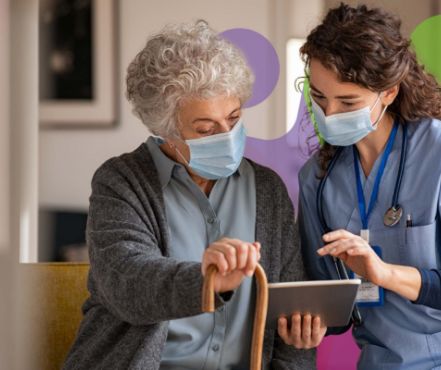East Riding
The East Riding Health and Care Partnership includes health and care organisations from across East Riding who are working together to improve the health of our population.
Our vision
Over the next decade, East Riding will become healthier, and that health will be fairer. East Riding Place will support delivery of the six big ambitions of our Health and Wellbeing Strategy 2022-2032:
- become a health generating place
- prevent now to avoid later harm
- start good health and wellbeing young
- make good health more equal across the area
- build a collaborative health and care system
Where we are now
- East Riding has an ageing and growing population, with increases in hospital care, social care and GP usage
- East Riding’s red flags are alcohol consumption, multiple complex needs, drug related deaths and student health
- one in nine people in East Riding have more than one long-term condition, and there is an elective backlog across primary and secondary care
- under 18 admissions for mental health need with a high prevalence of common mental health illness, high suicide and high self harm rates
- one in ten people smoke, two in three adults are overweight or obese and one in seven live with depression
Our priorities

What we will deliver in 2023-24
- Develop an Integrated Community Frailty Single Point of Access Hub including mapping, outcomes and delivery model
- work in partnership with North Yorkshire on the redesign of urgent care, developing a single fully integrated 24/7 specification
- re-establish a clinically-led Primary/Secondary Care Interface Group to explore opportunities for shared care pathway development
- across health, social care and education we will identify the barriers to overcome through working together, we will have taken the first step, and we will have a plan for action
- acceleration of a prevention programme for long-term conditions to support delivery of the prevention actions in the York Health and Wellbeing Strategy 2022-2032 Action Plan
- fulfil our role as an ICS to support the three city strategies, and as an anchor institution for development, housing, workforce, and supporting vulnerable groups

Primary Care
Since the NHS was created in 1948, the population has grown and people are living longer. Many people are living with long term conditions such as diabetes and heart disease, or suffer with mental health issues and therefore may need to access local health services more often.
To meet these needs, GP practices work together and with community, mental health, social care, pharmacy, hospital and voluntary services in their local areas as part of Primary Care Networks (also known as PCNs).

Choose well
We know that finding the right place to go when you become ill or are injured can be confusing. By selecting the right service for your illness or injury, you’re not only looking after your health but using your NHS services responsibly and in a way that helps hardworking staff to treat and care for patients appropriately.

SEND offer
The Local Offer is a way to make it easier for you to find out about services and support available to children and young people from birth to 25 years with special educational needs and disabilities (SEND). Information and support is separated into 6 sections, Education, Health, Care & Support, Leisure, Money, and Adulthood.
